#ukrainian cuisine
Text


Vegan Ukrainian Easter Paska (No-Bake Chocolate Cheesecake)
#vegan#desserts#Ukrainian cuisine#Eastern European cuisine#easter#cheesecake#veganized#paska#chocolate#millet#cashews#plant milk#maple syrup#sea salt
31 notes
·
View notes
Text
u fought for this country man show some respect to it's food /hj


actually this is all in case u were wondering what was the food sherlock cooked in the first episode💥 so look guys💥 guys💥
#ukrainian cuisine#this shit is mad tasty I swear#no actually as a ukrainian fan of sherlock & co this matters to me sm#sherlock & co#sherlock and co#sherlock and co watson#dr watson#john watson#sherlock and co podcast
55 notes
·
View notes
Text
In relation to my last post about Ukrainian and Polish gingerbread cakes I would like to make a little poll:

#poland#ukraine#food#polls#tumblr polls#cake#bakery#baking#ukrainian cuisine#polish cuisine#traditional food#christmas#christmas food
46 notes
·
View notes
Text
Not talking about situations when it mixed. (Like potato with mushrooms) because I think it's unfair
28 notes
·
View notes
Text
#ukraine#polls#ukrainian cuisine#only 10 options? pathetic#i want to see controversial options in the comments#let's get unhinged about this. i want to see bloodshed
93 notes
·
View notes
Text
mmpphhffgggggggghhhhhh ukrainian desserts w cheese …. lviv cheesecake… syrnyky…. mmphhfg
#shitpost#ukrainian#ukrainian tumblr#ukrainian culture#ukrainian cuisine#girlblogger#girlblogging#gaslight gatekeep girlboss#i’m just a girl#female experience#female hysteria#this is a girlblog#pinterest girl#lana del rey core#український пост#українське#укртамблер#український тамблер#український tumblr#укртумбочка
10 notes
·
View notes
Text
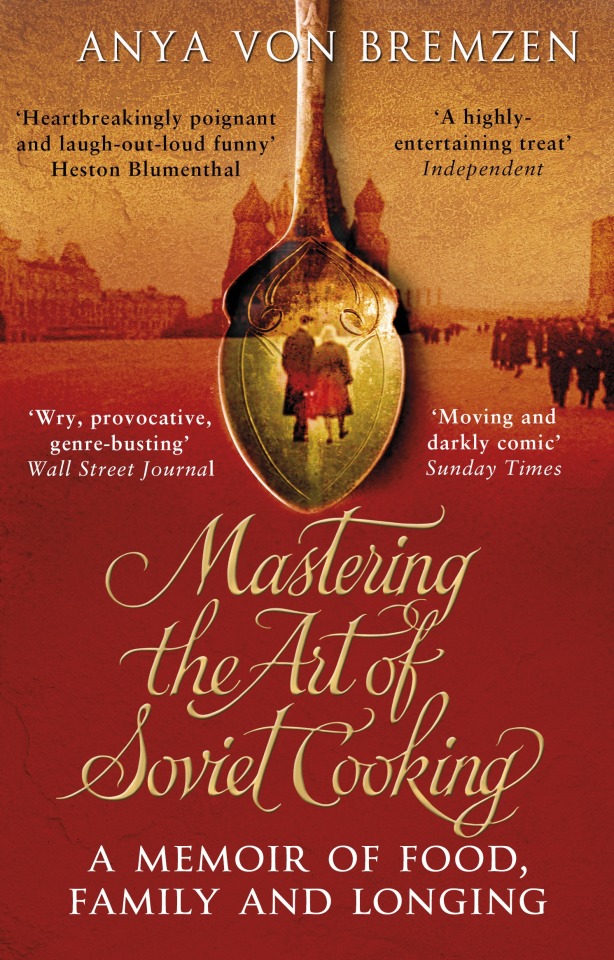
Mastering the Art of Soviet Cooking: a memoir of love and longing by Anya Von Bremzen
#ukraine#russia#soviet union#vintage cooking#ussr#ukrainian culture#ukrainian cuisine#book covers#vintage books
7 notes
·
View notes
Text
Merry Christmas my dear people! 🤍🤍🤍

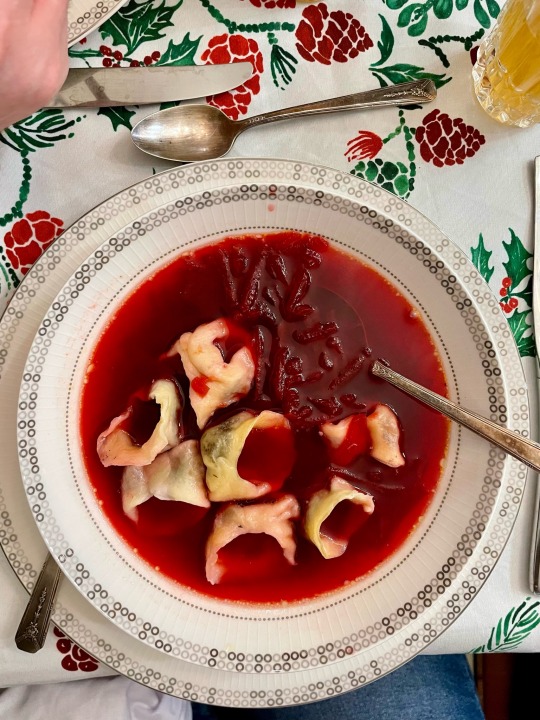


5 notes
·
View notes
Text
I learned how to make pyrizhky from a friend using this recipe* from Traditional Ukrainian Cookery by Savella Stechishin (this book is a national treasure btw).
* the online recipe is undoubtedly copied from Traditional Ukrainian Cookery; but in book, the amount of yeast is "1 package" (which is about 2.25 teaspoons); yeast enhancers are omitted; and the original salt is 1.5 teaspoons.
And then I made a metric shit tonne of pyrizhky:
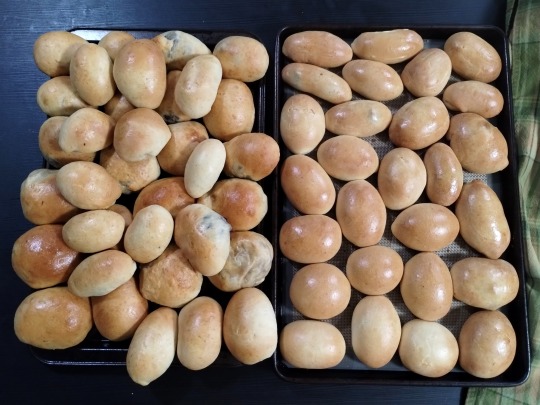
But I also lost track of what fillings went where, so we'll call it Ukrainian Roulette:
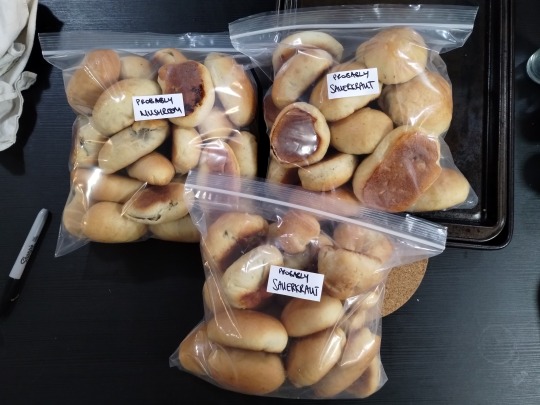
Fillings:
Mushroom
Sauerkraut (which may also contain farmer's sausage)
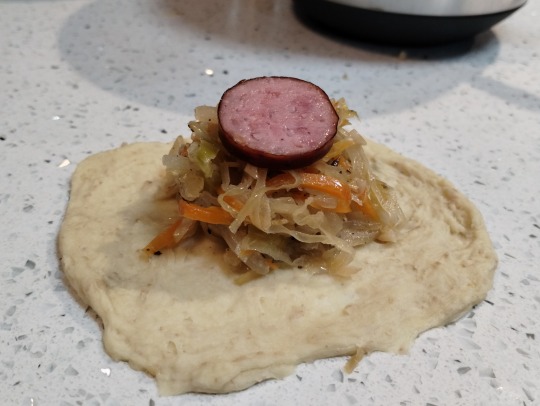
The recipe below is copied directly from the Ukrainian Classic Kitchen forum link above:
Pyrizhky are well-liked pastries with a filling. Pyrizhky are usually made of yeast-raised dough but for important occasions, puff pastry or short pastry may be used.
1 teaspoon sugar
1/4 cup lukewarm water
1/4 teaspoon powdered ginger or pinch of citric acid (vitamin C) or both as a dough enhancer (optional)
1 Tablespoon active dry yeast
1 cup scalded milk
1/4 cup butter or shortening or oil
2 eggs, beaten
1 teaspoons salt
1/4 cup sugar
4 1/2 to 5 cups sifted flour
To make pyrizhky, cut off small egg-sized pieces of dough, flatten each or roll 1/4 inch thick. Place a generous portion of the filling in the center, bring the edges together, and press to seal securely -- All edges must be free of filling.
NOTE: (I wet the edges with beaten egg white for a better seal and with well floured fingers seal the dough). I then roll the pyrizhky between my palms and seal again with well floured fingers at the seam again -- this prevents the pyrizhky from opening (double sealing).
Shape into an oblong with a plump center and tapering ends and place sealed side down on a well buttered parchment lined pan. This is the traditional shape of pyrizhky.
As an alternative method, the dough may be rolled 1/4 inch thick, cut into squares, filled, and sealed as directed.
Place, sealed side down, on a greased baking sheet, spacing them 1 to 1 1/2 inches apart. Cover and let them rise in a warm place until light, for about 1 hour.
Brush them with a beaten egg diluted with 2 tablespoons of water or milk. Bake in a moderate oven on the second level (375°F) for 30 to 35 OR (350º F. ) on the first level for about 25 to 35 minutes depending on their size. Makes about 22 to 24.
COOKED MEAT FILLING: (Nachinka z varenoho abo pechenoho miasa.
Use any kind of cooked ground meat (pork, veal, beef, chicken). Combine the meat with a chopped or grated onion, cooked in butter or bacon fat. Butter gives a much better flavour. Add a little gravy to moisten the mixture sufficiently. Season to taste with salt and pepper. If desired, a small quantity of any one of the following may be added: Cooked rice, chopped cooked mushrooms, hard cooked eggs, chopped fine. For additional flavouring, parsley or dill may be used.
MEAT FILLING:
1 medium onion, chopped fine
4 tablespoons butter (divided)
1 pound ground beef, or half pork and half beef, or even left over cooked meat
1/2 teaspoon salt
Pepper to taste
1 tablespoon flour
1/2 cup stock or water
1 teaspoon chopped parsley
2 hard cooked eggs, chopped
Cook the onion in half of the butter until it is tender. Add the remaining butter and the meat. Brown the meat lightly. Season with salt and pepper. Cover and cook over a low heat until done. Remove the meat. Stir the flour into the drippings. Add the soup stock or water, then cook, until the sauce comes to a boil. Combine with the meat and cool. Mix in the parsley and chopped eggs. For the above recipe I used leftover meat which I chopped up and added the same ingredients as above for meat filling.
SAUERKRAUT FILLING:
If you wish you can add other ingredients to your kapusta. Sometimes I add a handful of seedless raisins, grated carrots, a teaspoon of brown sugar or fried mushrooms. I like to use half and half olive oil and butter for the fat.
1 1/2 to 2 quarts sauerkraut
1 large onion, chopped fine
4 to 5 tablespoons fat
Salt and pepper.
Rinse the kraut well in warm water, squeeze dry, and chop finely. Cook the onion in the fat until tender. Add the kraut and cook it for about 15 minutes, or until the kraut is tender but not overcooked. Season to taste with salt and pepper. For a mild flavored filling, add some fresh cabbage that has been cooked, squeezed dry, and chopped. This filling should be dry.
COTTAGE CHEESE FILLING:
Press the cottage cheese through a sieve or mash it well. Add the remaining ingredients and mix thoroughly. Use with a yeast-raised dough.
MUSHROOM FILLING:
2 pounds mushrooms
1 onion, chopped fine
4 tablespoons butter
1/3 cup sour cream
1 cup soft bread crumbs
1 tablespoon chopped dill
2 hard cooked eggs, chopped
1/4 teaspoons salt
Pepper to taste
Clean and wash the mushrooms. Cook the wild variety of mushrooms in boiling water for 5 minutes and then drain thoroughly. Cultivated mushrooms need not be boiled. Chop the mushrooms very finely. Cook the onion in the butter until tender. Add the mushrooms and cream; cook over a low heat for 15 minutes. Stir in the remaining ingredients. Season to taste and cool the mixture. If the filling is crumbly, a raw egg may be added. This filling is good with a short pastry.
LIVER FILLING:
1 pound veal liver, sliced
1/4 pound bacon, sliced
1 onion, ground
1/2 cup soft bread crumbs
1/3 cup milk
Salt and pepper
Scald the liver, drain, and remove the membrane. Cook the bacon until crisp and remove it from the pan. Cook the liver and onion in the hot bacon fat until the liver is browned on both sides and the onion is tender. Grind the liver, onion, and bacon. Soak the bread crumbs in the milk and combine with the liver mixture. Season to taste with salt and pepper. an egg may be added to this mixture, if desired. Chill the filling when using it with a short pastry.
GREEN ONION FILLING:
4 cups green onions, cut fine
3 tablespoons butter
1/2 cup chopped dill
3 hard cooked eggs, chopped
1/4 teaspoon salt
Pepper to taste
Cook the onions in the butter until wilted. Stir in the dill and cook for 1 minute. Remove the onions from the range, add the eggs, and season to taste with salt and pepper. Use this filling with yeast-raised dough.
CABBAGE FILLING:
1 large head cabbage
1 tablespoon salt
1 onion, chopped
1/3 cup butter
1 tablespoon lemon juice
Salt and pepper
2 hard cooked eggs, chopped
Shred the cabbage very finely, sprinkle with salt, and let it stand for 15 minutes. Squeeze it dry. Cook the onion in the butter until tender. Add the cabbage and cook until it is tender but not overcooked. Mix in the lemon juice. Season to taste with salt and pepper. Stir in the hard cooked eggs. If desired, some chopped, cooked ham or chopped, cooked mushrooms may be added to this filling in place of eggs. Use the filling with yeast-raised dough or short pastry. Allow a generous portion of the filling when making pyrizhky because cabbage settles in baking.
SAVORY CHEESE PYRIH:
Prepare 1/2 recipe of yeast-raised dough for Pyrohy and Pyrizhky, or use bread dough when making bread. Use Cottage Cheese Filling and add to it about 1/2 teaspoon of caraway seed, if desired. A tablespoon of grated, mature onion may be used in place of the green onions. The cheese should be delicately flavoured with onion.
Roll the dough 1/2 inch thick to fit a 10 x 15 inch baking pan. Butter the pan and place the dough in it. Cover and let it rise until almost double in bulk. Spread with the cheese filling and sprinkle the top with melted butter. Cover and let it rise for about 20 minutes. Bake in a moderate oven (375 degrees F.) for 30 to 35 minutes. Cut into squares and serve warm.
COTTAGE CHEESE ZAVYVANTSI (rolls):
Prepare the dough as for Pyrohy and Pyrizhky or use bread dough when making bread. Prepare Cottage Cheese Filling. Some chopped green onions may be added to the filling, if desired. Roll the dough 1/4 inch thick, keeping it in a long and narrow rectangle. Spread with the filling and roll it up like a jelly roll. Seal the edges. Cut into 1 inch pieces. Dip each piece in melted butter and place, cut side up. in a buttered baking pan or buttered muffin pans. cover and let them rise in a warm place until light. Bake in a moderate oven (375°F.) for 30 to 35 minutes, or until done. Serve warm.
ONION ROLLS:
Prepare the dough as for Pyrizhky. Roll the dough 3/4 inch thick and cut out rounds with a large cookie cutter. Sprinkle the top of each round with a finely chopped onion. Press the onion pieces into the dough. Place the rolls on a greased baking sheet and brush with melted butter. Let them rise until very light. Bake in a moderate oven (375°F.) for about 25 minutes, or until done. Serve warm with soup or coffee.
NOTE: If you have a bread machine you can make this dough recipe http://www.ukrainianclassickitchen.ca/index.php?topic=8457.msg9323#msg9323
SHORT PASTRY FOR PYRIZHKY:
2 cups sifted flour
1/2 teaspoon salt
1/2 cup plus 2 tablespoons butter or shortening
1 egg yolk
2 teaspoons lemon juice
3 to 4 tablespoons ice water
All the ingredients should be very cold. Fillings should be cold. Sift the flour with the salt. Cut in the butter or shortening with a pastry blender until the mixture resembles a coarse meal. Combine the yolk with the lemon juice and water. Sprinkle the liquid over the flour and mix lightly until the dough holds together. Chill thoroughly. Roll the dough 1/4 inch thick and cut into squares or rectangles of the desired size. Have the filling ready. Place a portion of the filling in the centre, bring the edges together, and seal in a neat ridge along the centre. Place, sealed side up, on a greased baking sheet. Brush with a beaten egg diluted with 2 tablespoons of water or milk. Bake in a hot oven (400°F) for 15 to 20 minutes.
#food#recipe#savella stechishin#Traditional Ukrainian Cookery#Ukrainian cuisine#Ukrainian food#pyrizhky#pyrizhok#pyrohy#sauerkraut#pyrizhky rampage#Canadian cuisine#Canadian heritage#Canadian history#Ukrainian Canadian#Ukrainian Canadian history#Ukrainian roulette
2 notes
·
View notes
Text
veselka is always a good idea
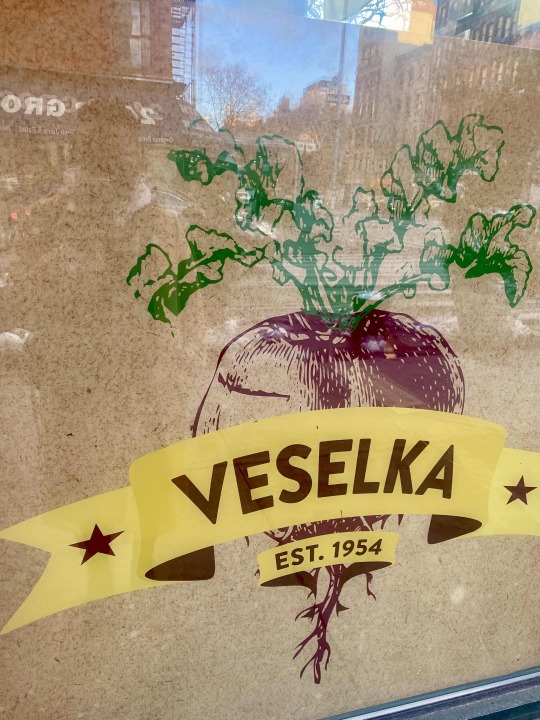

saw a short line while walking past and ofc a rare occurrence these days so jumped on and was planning on just getting a coffee and a pastry but then realized I was hungry (me all the time tbh) and they literally brought out my food 5 minutes after I placed the order
#veselka#east village#new york city#ukraine#ukrainian food#ukrainian cuisine#beef stroganoff#beets#restaurant#nyc#nyc food#madstroeats#food#foooooood#im hungry again looking at this
1 note
·
View note
Text
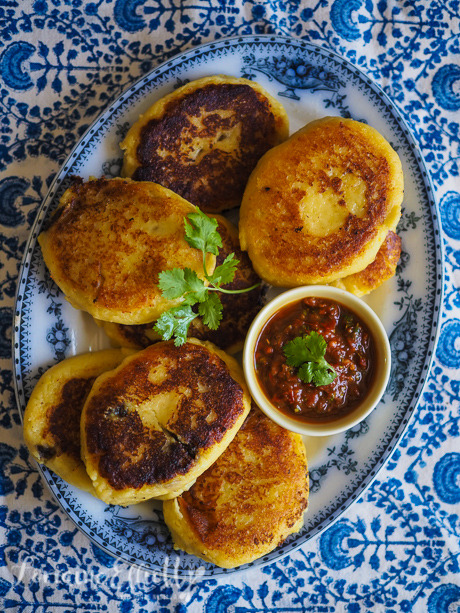
Mushroom Stuffed Potato Zrazy With Satsibeli (Vegan)
#vegan#appetizer#lunch#georgian cuisine#ukrainian cuisine#central european cuisine#transcaucasian cuisine#zrazy#potato#vegan butter#mushrooms#onion#garlic#white pepper#sauces#satsibeli#tomatoes#harissa#fenugreek leaves#cilantro#vinegar#coconut sugar#sea salt#!
85 notes
·
View notes
Text

Brighten up your table - and your day - with this quintessential Ukrainian beet soup!
#vegan#food#vegan food#foodgasm#plant based#food porn#homecook#from scratch#healthy meal#delicious recipes#healthy food#meal plan#yummy recipes#meal ideas#vegan recipes#ukrainian#Ukrainian cuisine#ukrainian recipes#ukrainian food#vegan soup#meatless#pisnyi borscht#meatless borscht#borscht soup#borscht#colorful food#magenta#beet#beet soup#instant pot
23 notes
·
View notes
Text
Polish Versus Ukrainian Cuisine, Part 1
I have to confess, I have a little sin on my consciousness, namely, I visit Instagram sometimes. In most cases I do that just to catch up with my friends and family, but, you know, as most of young people of my age I just end up scrolling a tiny bit (usually, right until the moment I feel the urge to vomit, as I genuinely hate this place).
Recently, I came across a very cozy video where a Korean home cook mixes a Polish Pierogi Ruskie recipe with some Korean toppings. The thing that confused me the most, though, was the most liked comment under this video left by a Ukrainian woman who claimed that Pierogi Ruskie is a Ukrainian dish and is, in fact, called Varenyky. It's easy to assume that this person has never made a single dumpling, varenyk or pieróg in her entire life, as she kept on claiming that Pierogi Ruskie can have a lot of different fillings and that Polish Pierogi don't have such a big choice of fillings as Ukrainian Varenyky do, so, clearly, this person had zero idea what Pierogi Ruskie actually are, but that's not the point.
This comment made me wonder how different are the two cuisines of those Eastern European countries. Having lived long years in both countries, I thought it would be interesting to study this topic a little bit, namely from the perspective of the difference between the staple dishes in two cuisines. After all, we actually are what we eat, especially on the global scale. Everyone knows Italy for their brilliant pizza and pasta, and everyone knows Japan for sushi and tempura, and even though food is not the only aspect of those cultures that made them famous around the world, it definitely adds up to create a full picture of their collective cultural identity.
So, in this post I'd like to share some personal observations that I made throughout my life about Polish and Ukrainian cuisine having lived significant portions of life in both countries, being ethnically related to both and being wholeheartedly fascinated by food.
Disclaimer!!! I'm not a food scientist or chef, nor am I a professional historian. All the notes down here are mostly based on my personal observations and some basic research. I did consult a professional cook and a baker whom I know personally as they happen to be my family members. I do recommend treating everything I share here with a grain of salt (hehe, because we gonna talk 'bout cookin', hehe, so use salt) and bear in mind that different cooks have different approaches to their recipes and your personal experience with Ukrainian and Polish food might differ from mine. That being said, I encourage you to share these experiences whether you are Ukrainian, Polish or anyone else, really. I do not accept such arguments as "Ruskie because Kyiv Rus!", though, as it's not about arguing in the first place, it's about diving into the heritage of those two countries and talking about the food.
Pierogi vs. Вареники

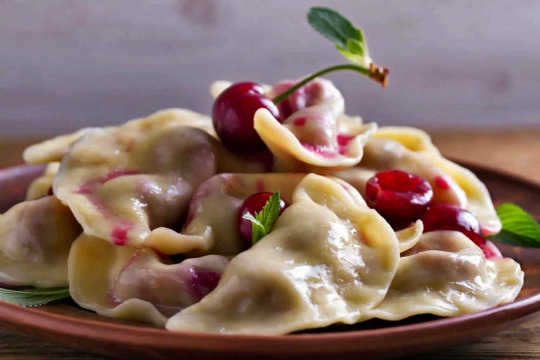
Let's start with them culprits. I think those two dishes are the most confusing ones because of their similarity. Gosh, both of them are dumplings from Eastern Europe shaped like a growing moon, aren't they?
The dough for both dishes varies from region to region, from cook to cook. In my experience, both recipes need three basic ingredients:
- liquid
- salt
- flour
The rest depends, really. You can change the four, you can change the liquid, replacing water with milk or kefir, you can add an egg. I personally go with my mother's recipe which is boiling hot water, egg, AP flour and salt.
Two of the striking differences are their size and shape. It seems like Ukrainian dumplings are usually smaller, flatter and quite translucent in comparison to Polish ones, which are big, sometimes even huge (check Pierogi Po Bieszczadzku, they are bigger than my fists, I kid you not), they have a very full body and the dough itself is thicker (the reason is not so much ingredients in the dough as is the method of forming/cutting the circles out of it). They also have a lot of different really funny regional names which very often also refer to the size, shape, filling or method of preparation, for instance, Dzyndzałki (Warmian small dumplings served in soup), Bulwanki (Eastern Polish holiday pierogi with variety of savoury fillings), Sasznie (A type of dumplings from Eastern Borderlands that use potato in the dough) or Sójki (Masovian baked pierogi made with yeast).
The fillings of both Pierogi and Varenyky basically might create their own multiverse. In both Poland and Ukraine, I found so many different combinations of fillings that it would be a waste of time to write about each one of them. However, Pierogi most often have savoury fillings (from meat through cheese and potatoes though different types of groats and the list goes on and on..), while Varenyky have a bigger variety of sweet fillings, including the classic cherry filling. Also, Ukrainians seem to be not very much into the meat filling. In my childhood, I had never eaten meat dumplings in Ukraine, however, at the time, pelmeni were quite a popular alternative. Ah, classic Soviet influence - replace your own with something russian )yuck.
As for the toppings, depending on what kind of filling you are dealing with, there are many alternatives for both dishes, including chives, fried bacon, sour cream, melted butter, caramel sauce (haven't seen this one in Ukraine, but noticed it being popular in Poland with sweet cottage cheese Pierogi) and many others. Both dishes are absolutely marvelous even without any additions.
Now, if anyone says that Pierogi Ruskie are called that way because they are Ukrainian, they are not entirely wrong. This type of pierogi was invented in Eastern Galicia (a geographical region in Western Ukraine which was also used to refer to the Eastern part of Poland; The name derives from its Polish name of territory - "Ruś Czerwona" ("Ruthenia Rubra" in Latin)), however there's a high chance it happened when it was the part of Austrian Empire, when majority of population in this region, especially in big cities including Lviv, were Polish. Either way, this dish is much more popular in modern Poland and has lots of different regional variations that you can meet across the whole country (see the Bryndzylki designed by Polish Highlanders), while it's basically non-existent in Ukraine and in the country they are often called "польські пироги" (literally "Polish Pierogi". Pierogi Ruskie are prepared with cheese, onion and potato filling, while in Ukraine you are more likely to come across some Varenyky with potato, onion and bacon filling.
Thank you very much for your attention, share your dumpling preferences and experiences in the comments or in the reblogs, share your recipes, go crazy, and let's discuss the food!!
My pierogi variation with cottage cheese and strawberry jam filling (not the most attractively shaped one, but very tasty - my significant other approved them):
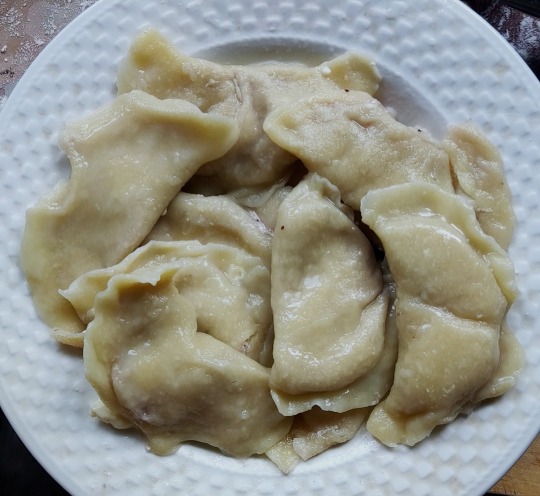
#poland#ukraine#pierogi#varenyky#polish cuisine#ukrainian cuisine#polish culture#ukrainian culture#dumplings#cultural differences#culturalheritage#culturalexploration#polska#polska tradycja#polish tumblr
8 notes
·
View notes
Text
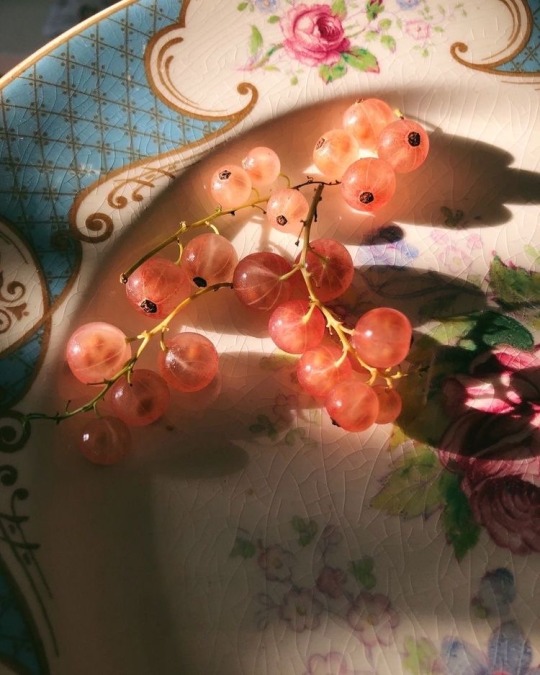
Me and my grandpa would sit on tiny wooden stools under the Sun, picking currants, but mostly eating them. The sour-sweet bubbles would pop between my teeth, seeds sticking to the crevices. Ants would tickle my toes and birds would chirp angrily a few feet away as they waited for us to move on so they could pick at the berries left behind. We would stew the berries we couldn’t eat into jam, left to sit in the cellar until we would get hungry again.
#ukrainian#ukrajina#ukrayna#ukraine#ukraina#cottage living#cottgecore#cottageblr#cottagecore#cottage life#cottage aesthetic#aesthetic#slavic#currants#berries#ukrainian tumblr#ukrainian culture#ukrainian cuisine#ukrainian food
10 notes
·
View notes
Text
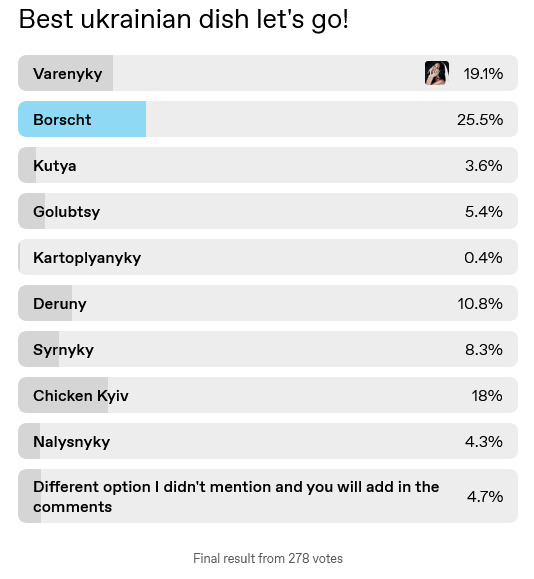
#ngl i forgot i wanted to make this#unfortunately tumblr doesn't allow adding videos to reblogs so a separate post will have to do#ukraine#ukrainian cuisine
44 notes
·
View notes
Text
I found a site with recipes of authentic Ukrainian dishes oaoaoaoao >:D
2 notes
·
View notes